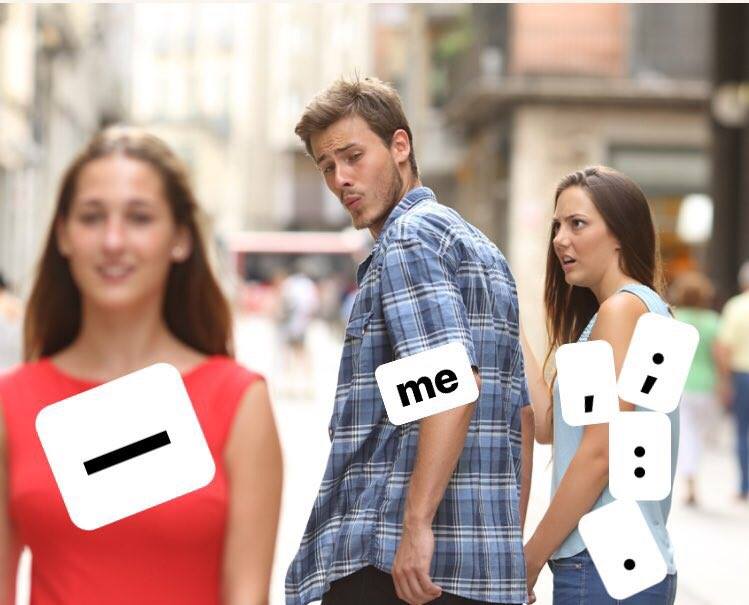
Powerful punctuation
Imagine your essay is a musical score. If the words create the melody, your choice of punctuation controls the dynamics, the volume, the tempo, the time signature. A comma is a rest, an exclamation point notes a crescendo, and a sentence consciously devoid of punctuation (a daring stylistic move) can convey a sense of speed and frenzy.
Even so, you might find punctuation somewhat limiting. Maybe there’s an idea you want to express, a string of clauses that belong together, but you aren’t sure which punctuation to deploy. Perhaps you need something that lives between a period and a comma, something that’s not quite a colon but is definitely not a semicolon. Hmm. If only there were some other punctuation mark that could fill this particular niche.
Behold: the dash
Elegant, versatile, and unpardonably underrated, the dash allows you to work around and in between the rules of punctuation as you know them. There isn’t a hard and fast rule about where and when to use a dash. But luckily for us, there isn’t really a wrong way to do it either. Here are a few examples:
Contacting someone who has potentially contracted the virus, explaining to them what is happening inside their body, and advising them on what to do next – this process helped me direct my passion toward a more specific area of study: public health.
This example is technically one long sentence. The first half is a list of activities, in itself not a complete thought. The dash bridges that string of subordinate clauses (nonfinite clauses if you’re fancy) with an independent clause, bringing the whole idea together and making it complete.
As we struggled to breathe in his smoke-filled truck, my grandfather would giddily hype up the meal we were about to eat – “The most authentic Lebanese food in the city!”
In this example, the dash plays a different role. We know to attribute the dialogue to the writer’s grandfather. The dash easily circumvents any need for a clumsy and expository “he would say.” That might seem minor, but hey, that’s three words the writer can use elsewhere, and every word counts. By the way, are you using dialogue in your essay? Because you should be!
My youth group’s best qualities – diversity of thought, a strong community, open discourse – have left an indelible mark on me.
You might be thinking, shouldn’t she have used a comma here? While that could technically work, the sentence would look sloppy, overseasoned with comma after comma. Here, the dash adds clarity.
While these examples are far from exhaustive, hopefully they provide a helpful primer in the power of the dash. Use it judiciously!